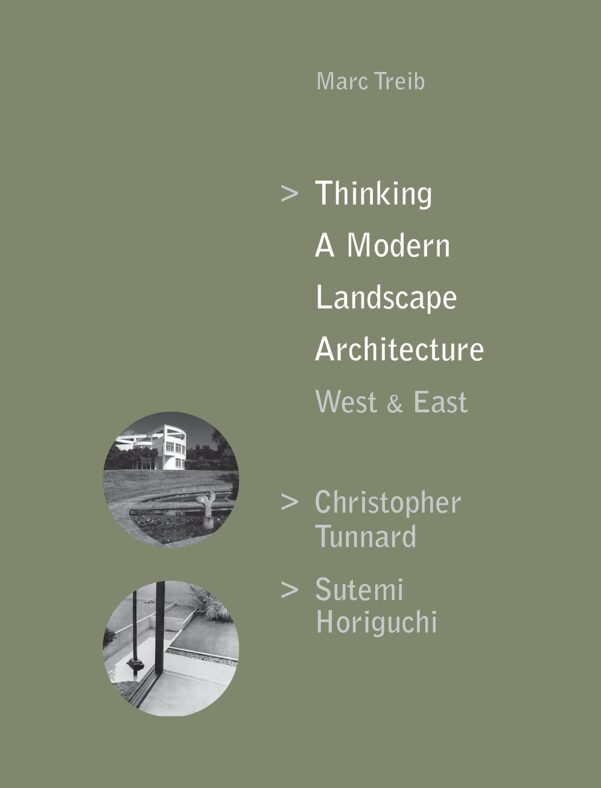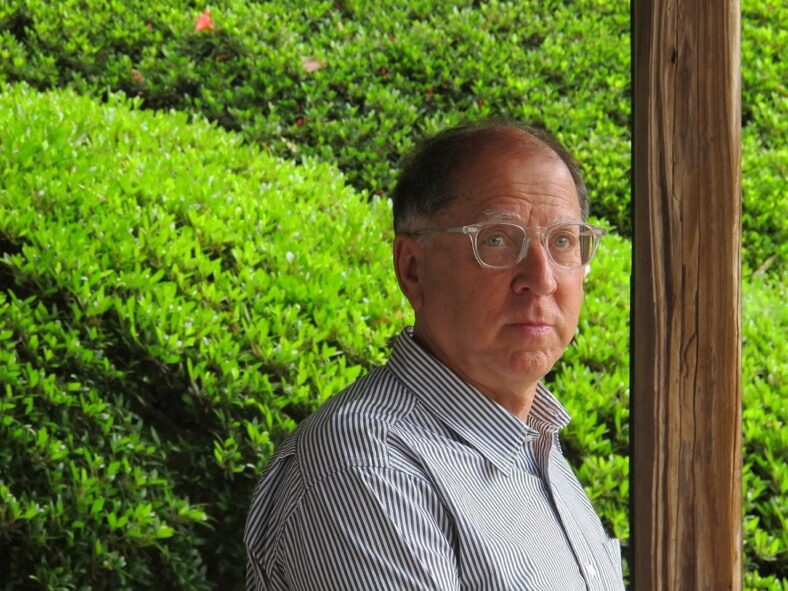Lecture & Book Signing by Marc Treib
NOTE: There will be a book sale from 1:00 -1:30 PM and 3:00 – 4:00 PM (before and after the lecture) outside the Yanai Classroom. There will be a book signing from 3:00 – 4:30 PM. Members receive a 10% discount on their purchase. The lecture will take place from 1:30 – 3:00 PM.

Marc Treib, a prolific critic, author, and historian of architecture and landscape architecture explores what influenced 20th-century garden designs in Japan in reference to his most recent book, “Thinking a Modern Landscape Architecture, West & East: Christopher Tunnard, Sutemi Horiguchi.”
Horiguchi (1895-1984) was an architect and historian of Japanese architecture who taught at Kanagawa and Meiji universities. He was one of the first Japanese architects to explore western modernist architecture and one of six founding members of Japan’s first organization of modernist architects – the Bunriha Architectural Society, which, like the Vienna Secession, sought to break from the established architectural practices of the time. Horiguchi was a noted critic of the meaningless use of ornament or traditional forms in contemporary architecture, likening it to moss and duckweed floating on stagnant water. Yet he still retained a deep respect for Japan’s architectural heritage, embodying modernist principles without trivializing the past.
While Horiguchi looked to eighteenth-century Rimpa painting as a source for making a modern garden, Mirei Shigemori (1896–1975) sought other, more contemporary sources for his design ideas. Trained as a painter at the Tokyo University of the Arts and long involved with invigorating the practice of ikebana, Shigemori applied ideas drawn from modern art to garden making.
Both Horiguchi and Shigemori used history and tradition to suit their purposes, although Shigemori used them more willfully and shifted between historical references and modern invention. Horiguchi’s landscapes tended to be more introspective than demonstrative, ever refined and ever elegant; Shigemori’s were more demonstrative and exuberant, but always enriched by historical references.
About Marc Treib

Marc Treib is Professor of Architecture Emeritus at the University of California, Berkeley, and a noted landscape and architectural historian and critic who has taught internationally and published widely on modern and historical subjects in Japan, the United States, and Scandinavia. He is co-author with Ron Herman of the definitive “Guide to the Gardens of Kyoto” as well as author of many books including: “Thinking a Modern Landscape Architecture”, “West & East: Christopher Tunnard, Sutemi Horiguchi”, “Garrett Eckbo: Modern Landscapes for Living”, “Space Calculated in Seconds: The Philips Pavilion” and “Sanctuaries of Spanish New Mexico”. He is editor of multiple volumes including “An Everyday Modernism: The Houses of William Wurster” and “Modern Landscape Architecture: A Critical Review”, and co-editor of “Regional Garden Design in the United States”. Trieb is the recipient of several honors including a Guggenheim Fellowship, Fulbright Fellowships, American Academy in Rome Fellowship, American Society of Landscape Architects Honor Awards, and Best Exhibition Publication Award from the Society of Architectural Historians.